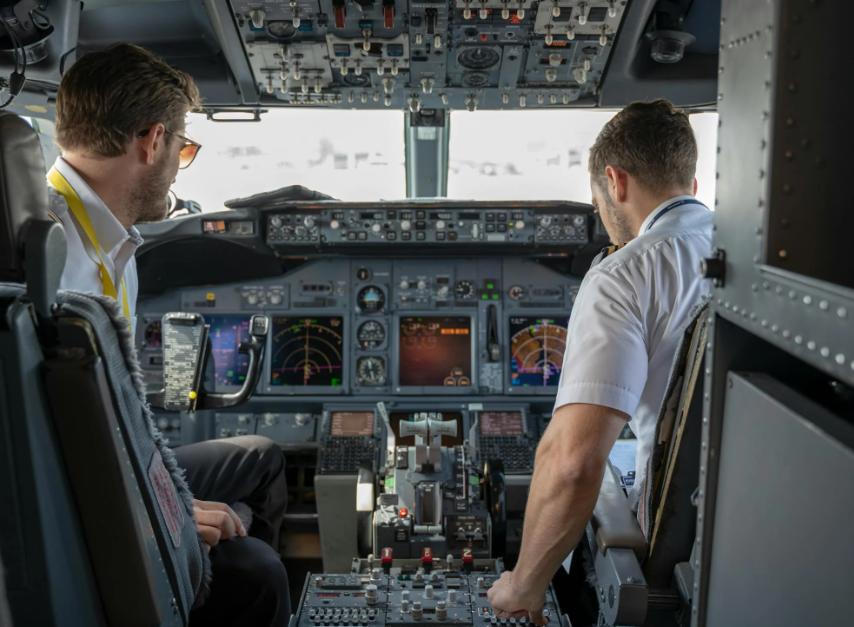Travel
Are You a Pilot? 5 Pieces of Aircraft Safety Equipment

Operating an aircraft involves much more than mastering technical abilities and understanding aeronautical principles; it necessitates a thorough grasp of safety equipment that becomes crucial when emergencies arise. From experienced commercial pilots to weekend aviation enthusiasts and student pilots working on their licenses, intimate knowledge of safety equipment remains non-negotiable.
While aviation authorities establish mandatory safety requirements for various aircraft types, thoughtful pilots go beyond these basic standards. They recognize that appropriate safety equipment, paired with thorough operational knowledge, creates essential safety margins that transform potential disasters into manageable situations.
This article examines five vital pieces of aircraft safety equipment that warrant careful attention, consistent inspection, and complete understanding before encountering real emergencies.
Fire Extinguishers: Your First Line of Defense Against In-Flight Fires
An aircraft fire emerges as one of aviation’s most critical hazards: flames trapped within a confined space at high altitude where escape options remain limited. Aircraft fire extinguishers stand apart from regular models used in residential or commercial settings. Modern aviation fire extinguishers, like the 5 lb Halotron aircraft fire extinguisher, are beneficial. Pilots benefit from thorough knowledge of their extinguisher’s positioning, operational characteristics, and upkeep protocols before emergencies occur. Flight preparation involves monitoring pressure readings, inspecting safety seals, and confirming proper mounting that allows quick access. Aircraft fire extinguishers feature distinct classifications: Type A addresses standard combustible materials, Type B tackles flammable liquid blazes, and Type C handles electrical fire incidents. These categories play a crucial role in emergency response effectiveness.
Emergency Locator Transmitters: Ensuring Rescuers Can Find You
Emergency Locator Transmitters (ELTs) play a vital role as electronic distress beacons when aircraft experience unplanned landings in remote locations. These sophisticated devices spring into action either automatically during crash impacts or through manual activation by the flight crew. Once triggered, they emit powerful distress signals that are picked up by an extensive network of search and rescue satellites orbiting Earth. The technology behind ELTs has undergone remarkable advancements over the decades, bringing transformative improvements to aviation safety and emergency response capabilities. Modern 406 MHz ELTs represent the current standard, transmitting highly detailed information including precise GPS coordinates and unique aircraft identification data directly to rescue coordination centers worldwide. This enhanced location accuracy and aircraft-specific information enables rescue teams to pinpoint distressed aircraft with unprecedented precision and speed. The integration of GPS technology with ELT systems has revolutionized the way emergency responders locate and reach aircraft in distress, significantly improving survival chances for passengers and crew in emergency situations.
First Aid Kits: Medical Preparedness at Altitude
Aviation first aid kits serve a unique purpose, addressing medical situations that arise miles above ground-based medical facilities. These specialized kits go far beyond basic home medical supplies, incorporating items that tackle altitude-specific concerns like hypoxia, decompression issues, and medical treatment in confined aircraft spaces. While commercial flights follow specific kit requirements, private pilots who enhance their medical preparedness find themselves ready for various in-flight medical scenarios. A well-equipped kit includes bleeding control supplies, pain and nausea relief medications, diabetic emergency provisions, and materials for addressing burns, lacerations, and shock conditions.
Survival Kits: Preparation for Unexpected Landings
Aircraft survival equipment focuses on sustaining life after emergency landings, supporting survival during the critical period between landing and rescue. The contents of these kits vary based on flight routes and terrain characteristics. Flying over water demands different survival tools compared to mountain routes, while desert environments call for another set of specialized equipment. However, some core survival items maintain their value across all terrains and conditions.
Personal Flotation Devices: Essential Protection for Overwater Operations
Life vests and preservers play a vital role in water-related aviation safety, turning potentially fatal water landings into survivable events. While aviation rules require flotation devices during flights beyond gliding range from shorelines, many pilots include these safety items on all flights over water bodies. Today’s aviation flotation devices incorporate advanced features like water-activated inflation systems, backup manual inflation options, and high-visibility materials with reflective elements to aid rescue operations.
Conclusion
Safety equipment transcends mere regulatory requirements, embodying aviation’s core principle that proper preparation prevents disastrous outcomes. These five equipment categories create the basis for comprehensive aircraft safety measures, yet equipment alone cannot guarantee survival. The effectiveness of safety gear also relies on proper training, consistent maintenance, and sound decision-making during critical moments. A robust safety approach combines high-quality equipment, meticulous upkeep, and thorough operational knowledge, creating multiple safety layers that help transform emergency situations into manageable events with successful outcomes.
-

 Rappers10 months ago
Rappers10 months agoGloRilla Net Worth: Height, Age, Bio, Real Name & Career
-

 Businessman10 months ago
Businessman10 months agoBrandon Fugal Net Worth: How Rich is Skinwalker Ranch Owner?
-

 Rappers3 years ago
Rappers3 years agoBigXthaPlug Net Worth: Height, Age, Real Name & Career
-

 TV Stars10 months ago
TV Stars10 months agoKaleb Cooper Net Worth: How Rich is the TV Star Actually?
-

 Internet Stars3 years ago
Internet Stars3 years agoMufti Menk Net Worth: How Rich is the Islamic Speaker Actually?
-

 TV Stars10 months ago
TV Stars10 months agoCarla Diab Net Worth: How Rich is the TV Star Actually in 2025?
-

 Businessman2 years ago
Businessman2 years ago7 Proven Lead Generation Strategies To Implement in 2023
-

 Rappers10 months ago
Rappers10 months agoDD Osama Net Worth: Height, Age, Real Name, Career & More






















You must be logged in to post a comment Login